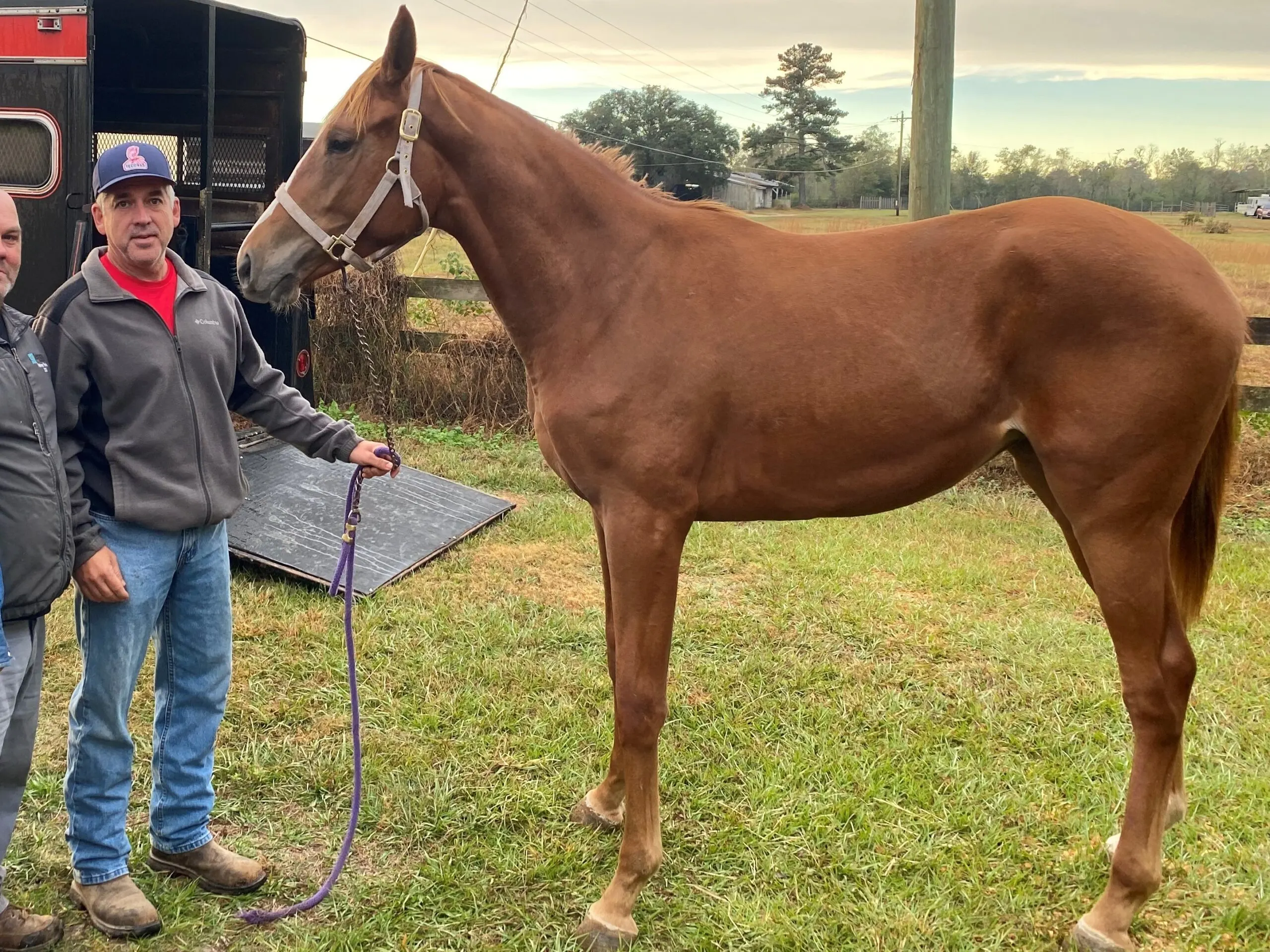Last updated: August 10, 2023
Any links on this page that lead to products on Amazon are affiliate links and I earn a commission if you make a purchase. Thanks in advance – I really appreciate it!
Do horseshoes hurt horses? It’s a question that sparks curiosity and concern among horse enthusiasts and casual observers alike. The process of shoeing, where metal shoes are fitted to a horse’s hooves, is a centuries-old practice. It’s fascinating to watch, but it also raises an important question about the comfort and well-being of these amazing animals.
The answer, as with many things, is not entirely black and white. Properly fitted and applied horseshoes, done by skilled farriers, typically do not hurt horses. They are designed to protect the hooves and provide additional support. However, if done improperly or in situations where they are unnecessary, horseshoes could cause discomfort or other issues.
This article aims to explore the practice of shoeing horses in-depth, looking at both the benefits and controversies that surround this age-old tradition. Whether you’re an experienced horse owner or someone who has simply wondered about this practice, join us as we unravel the truth behind the question, “Do horseshoes hurt horses?”
Origin and Development of Horseshoeing
Horseshoeing has deep historical roots that trace back over a thousand years. The practice began with the need to protect horse hooves from rough terrain, especially in regions where rocky or hard ground was common.
While early solutions involved leather or plant materials, the development of metalworking techniques allowed for more durable and effective horseshoes. In medieval Europe, horseshoeing became an art form practiced by skilled blacksmiths known as farriers.
These craftsmen would create custom horseshoes, carefully fitting them to each horse’s unique hoof shape. Over time, horseshoe design evolved, incorporating various materials and styles suited for different types of work, terrain, and horse breeds.

Traditional Purposes and Beliefs
The primary purpose of horseshoeing has always been to protect the horse’s hooves. Hooves are vital to a horse’s health and ability to work, and they can easily become damaged or worn on harsh surfaces. Horseshoes provide a protective barrier, enabling horses to travel and work on various terrains without injury.
Beyond practicality, horseshoes have also held symbolic significance in various cultures. Some have viewed them as lucky charms, and you might even find horseshoes hung over doorways for good luck today. Others have attributed mystical properties to horseshoes, believing that they ward off evil spirits.
In traditional horse care, horseshoes were considered essential for working horses, particularly those used in farming, transportation, or military service. They were a sign of a well-cared-for horse, reflecting both the owner’s status and the importance of horses in daily life.
Today, horseshoeing continues to be a blend of science, art, and tradition. While the methods and materials may have evolved, the underlying purposes remain much the same: protection, performance, and in some cases, a nod to tradition and belief.
Understanding the history of horseshoeing adds depth to our exploration of the question posed earlier: Do horseshoes hurt horses? As we’ve seen, the answer is nuanced, and the history helps to frame why horseshoes have been—and continue to be—a prominent part of equine care.
Structure and Function of the Hoof
The horse’s hoof is a marvel of natural engineering. Made up of several key components, the hoof acts as a shock absorber and provides traction while protecting the sensitive inner structures of the foot.
- Wall: The hard outer part of the hoof, made of keratin (the same protein found in human hair and nails), provides protection and shape.
- Sole: This is the undersurface of the hoof, which bears the weight of the horse and provides additional protection.
- Frog: A V-shaped structure on the bottom of the hoof, the frog aids in traction and promotes blood circulation in the foot.
Together, these structures function as a cohesive unit, allowing the horse to move gracefully and efficiently across various terrains.
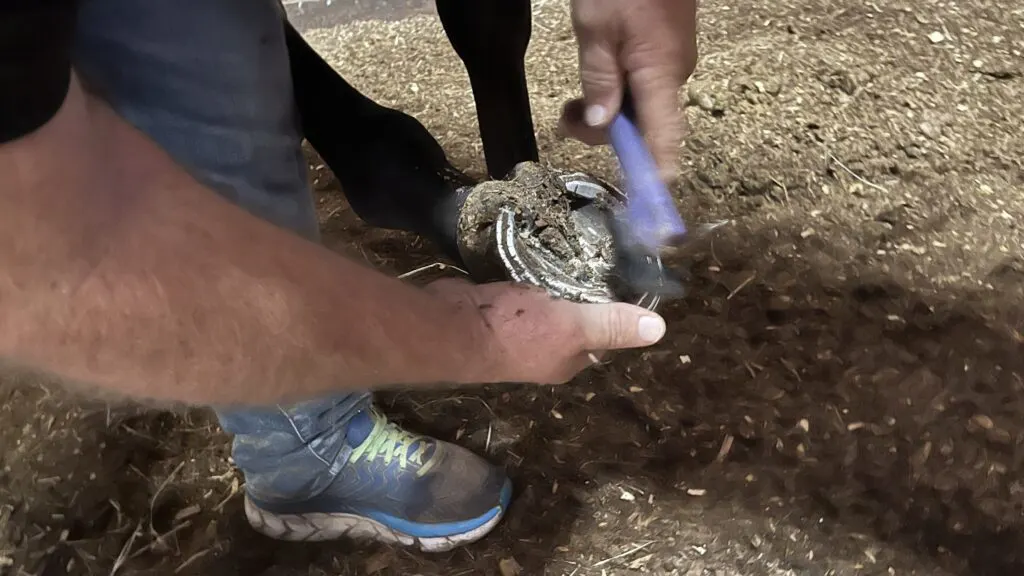
Importance of Hoof Care in Horse Health
A horse’s hooves play a vital role in its overall health and well-being. Just as we take care of our feet by wearing proper footwear, horses need proper hoof care to remain healthy and active.
Regular trimming and inspection by a skilled farrier or veterinarian help to prevent problems such as cracks, infections, or imbalances in the hoof. In some cases, horseshoes are applied to correct specific issues or provide added support.
In other instances, a horse may be perfectly happy and healthy without shoes, and proper trimming and care may be all that’s needed. The importance of hoof care extends beyond the foot. An improperly cared-for hoof can lead to lameness, affecting the horse’s gait and causing discomfort or pain.
This can have a domino effect on the rest of the horse’s body, leading to more significant health problems. So, do horseshoes hurt horses? As we delve into the anatomy of the horse’s hoof and the importance of proper care, we begin to see that the answer is complex.
Whether shod or unshod, what truly matters is the attention to detail, knowledge, and care that goes into maintaining a horse’s hooves. This foundation is the key to a horse’s health, performance, and overall happiness.
Detailed Description of How Horseshoes Are Applied
Shoeing a horse is a process that requires skill, precision, and an understanding of the individual horse’s needs. Here’s a general outline of how it’s typically done:
- Examination: The farrier begins by thoroughly examining the horse’s hooves, looking for signs of wear, imbalance, or any specific issues that need to be addressed.
- Trimming: Using specialized tools, the farrier trims the hoof wall and sole to the proper shape and length, ensuring a balanced foot.
- Fitting the Shoe: A horseshoe is selected or forged to match the horse’s specific hoof size and shape. It may be heated and shaped as needed to ensure a perfect fit.
- Attaching the Shoe: The shoe is then nailed to the hoof using specialized nails. The nails are driven in such a way that they do not cause pain or harm to the horse; they pass through the insensitive part of the hoof.
- Finishing Touches: The farrier will file and finish the hoof, ensuring that the shoe is securely attached and that there are no sharp edges or irregularities.
This process requires expertise, and when done correctly, it does not hurt the horse. It can actually enhance the horse’s comfort and ability to perform specific tasks.
Varieties of Horseshoes and Methods
- Traditional Steel Shoes: Often used for working or performance horses, providing durability and support.
- Aluminum Shoes: Lighter in weight, these are typically used for racing horses or those needing less support.
- Therapeutic Shoes: Custom-designed for horses with specific health issues or deformities, helping to correct or alleviate problems.
- Barefoot Trimming: Some horses may not need shoes at all. Proper trimming and care can allow them to be comfortable and healthy without shoes.
The process of shoeing a horse is a complex, highly skilled practice that takes into consideration the individual horse’s anatomy, needs, and lifestyle. Whether a horse is shod with traditional steel shoes, lightweight aluminum, or therapeutic designs, or even goes without shoes, the key is in the understanding and application by skilled professionals.
This practice’s rich history and diverse techniques add another layer to our exploration of the central question: Do horseshoes hurt horses? The evidence continues to suggest that when done properly, they do not.
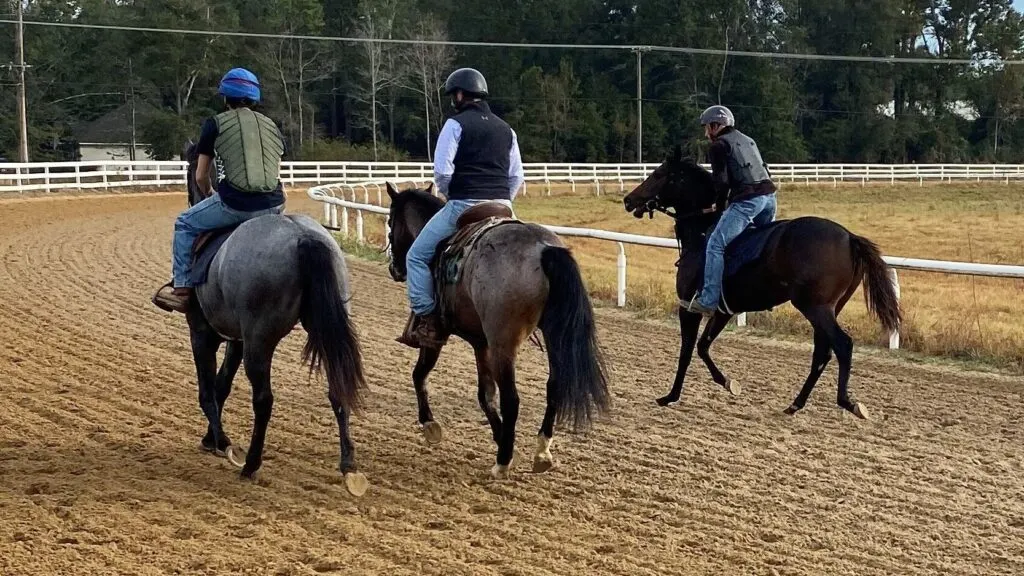
Claims that Horseshoes May Cause Pain or Harm
While many horse owners and professionals advocate for horseshoeing, there is a group of people who argue against the practice. They claim that horseshoes may cause discomfort, restrict the natural movement of the hoof, or even contribute to long-term harm.
Some critics argue that the process of nailing the shoe to the hoof can be traumatic if not done correctly. Others believe that horseshoes can impede the hoof’s natural expansion and contraction, possibly leading to circulatory problems and overall hoof health decline.
Supporting Evidence, If Any
It’s essential to note that many of the arguments against horseshoeing are based on individual beliefs, philosophies, or isolated incidents rather than a broad consensus in the scientific or veterinary community. However, some studies and anecdotal evidence do support these concerns:
- Improper Shoeing: If a horseshoe is fitted incorrectly or the process is carried out by an unskilled individual, it can indeed cause pain, discomfort, or even injury to the horse.
- Long-term Effects: Some argue that continuous wearing of horseshoes may alter the natural wear patterns of the hoof, possibly leading to imbalances or chronic issues.
- Barefoot Movement: There is a growing movement that promotes barefoot horses, focusing on natural trimming and care. Proponents argue that horses can thrive without shoes and that horseshoeing is often unnecessary.
While these points merit consideration, it’s also crucial to understand that each horse is unique, and what may be suitable for one horse might not be for another. The decision to shoe or not to shoe often depends on the individual horse’s needs, its activities, and the owner’s or caretaker’s philosophy and understanding of horse care.
In summary, the arguments against horseshoeing offer a different perspective on this age-old practice. While there is some evidence to support these claims, many in the equine community continue to see horseshoeing as beneficial when done correctly.
Reasons Why Horseshoes May Be Beneficial or Necessary
Contrary to the arguments against horseshoeing, many in the equine community firmly believe in the benefits and occasional necessity of shoeing horses. Here are some common reasons:
- Protection: Horseshoes provide a protective barrier, especially for horses that work or travel on rough, hard, or abrasive surfaces. This protection helps prevent wear, cracks, and other injuries.
- Support: Horseshoes can offer additional support for the hoof, aiding in balance and alignment. This is particularly beneficial for horses with conformational challenges or specific performance needs.
- Therapeutic Purposes: Specialized horseshoes can be used to treat or manage various hoof-related health problems. They can help in correcting deformities or alleviating discomfort from chronic conditions.
- Enhanced Performance: Horseshoes may enhance a horse’s performance in specific disciplines, such as racing, jumping, or dressage, by providing the needed traction or support.
Expert Opinions and Scientific Evidence
The arguments in favor of horseshoeing are often supported by experienced farriers, veterinarians, and equine scientists. Here’s a look at some expert opinions and evidence:
- Farrier Expertise: Skilled farriers have years of training and experience in assessing and fitting horseshoes. They often work closely with veterinarians and horse owners to ensure the best possible care for each individual horse.
- Scientific Studies: Research into the biomechanics of the horse’s hoof has shown that properly fitted and maintained horseshoes do not harm the horse. Instead, they can provide benefits in specific circumstances.
- Veterinary Support: Many veterinarians recommend horseshoes for certain horses, recognizing the benefits in terms of protection, support, and overall hoof health.
The arguments in favor of horseshoeing present a strong case for the practice in many scenarios. The key seems to lie in the individualized approach, skilled application, and ongoing care and maintenance. As with many aspects of horse care, there is no one-size-fits-all answer.
Barefoot Trimming and Alternatives to Traditional Horseshoeing
Traditional horseshoeing is not the only option available to horse owners and caretakers. Modern approaches and alternative methods have gained traction, offering a different perspective on hoof care:
- Barefoot Trimming: This method focuses on maintaining the natural shape of the hoof, allowing the horse to go without shoes. Proponents argue that it encourages healthier hooves, promoting natural growth and wear patterns.
- Hoof Boots: Hoof boots are removable coverings that can be used instead of permanent horseshoes. They offer protection and support as needed, such as during trail riding, without altering the hoof’s natural state.
- Composite Shoes: Made from flexible materials, composite shoes can offer a compromise between traditional metal horseshoes and going barefoot, allowing more natural hoof movement.
Consideration of Individual Horse Needs
Whether opting for traditional horseshoeing, barefoot trimming, or another alternative, what’s crucial is recognizing and accommodating each horse’s individual needs:
- Assessment: A detailed assessment of the horse’s lifestyle, work, terrain, and specific hoof conditions is essential in choosing the best approach.
- Professional Guidance: Working with knowledgeable and experienced farriers, veterinarians, or hoof care specialists ensures that decisions are made with the horse’s best interest in mind.
- Regular Monitoring: Ongoing care and monitoring allow for adjustments and changes as needed, ensuring that the horse remains comfortable and healthy.
The debate around horseshoeing has led to a broader understanding of hoof care and the emergence of alternative options and modern approaches. The array of choices underscores the complexity of the subject and emphasizes that there is no singular right or wrong answer.
The decision to shoe or not to shoe must always consider the individual horse’s unique needs, lifestyle, and health. By embracing a flexible, informed approach, horse owners and caretakers can best answer the question, “Do horseshoes hurt horses?” with the well-being of their equine companions at the forefront.
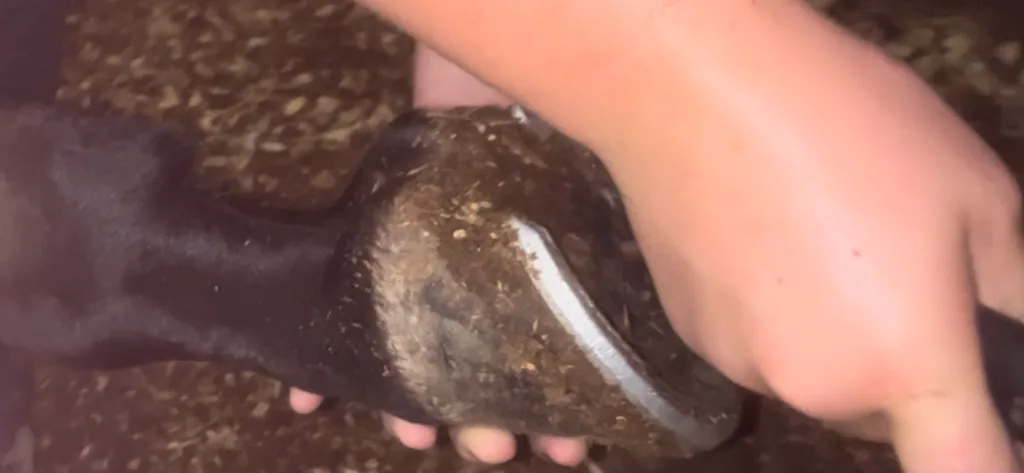
Are Horseshoes Cruel? My Thoughts
The horseshoe is secured to a horse’s foot with nails driven through the hoof wall. This has led many people to believe that the application and removal of this shoe can be painful horses – but in reality, it doesn’t hurt.
The good news is that the nails that hold the shoes in place only go through the part of the hoof that doesn’t have nerves. That makes putting horseshoes on and taking them off painless. In short: horseshoeing isn’t cruel, inhumane, or painful.
Most horses do not even flinch at the time of shoeing. If they could talk, they’d probably tell us that being shoed is similar to clipping your fingernails.
Not all horses need shoes.
Horses work in many different environments and on varying terrain types, which can determine whether or not they need shoes at any given time. Horses used for work, transportation, and recreation likely need shoes to protect their hooves from damage when they walk or run over rough terrain such as concrete or to get a better grip.
Without shoes, a horse can get injured very quickly and be less useful, which is why you must ensure your horse has always got horseshoes before heading out into potentially hazardous areas. A horse that grazes most of its day or is worked over soft ground is less likely to need protection for its feet. But each horse is different, and you must decide for yourself if your horse needs shoes.
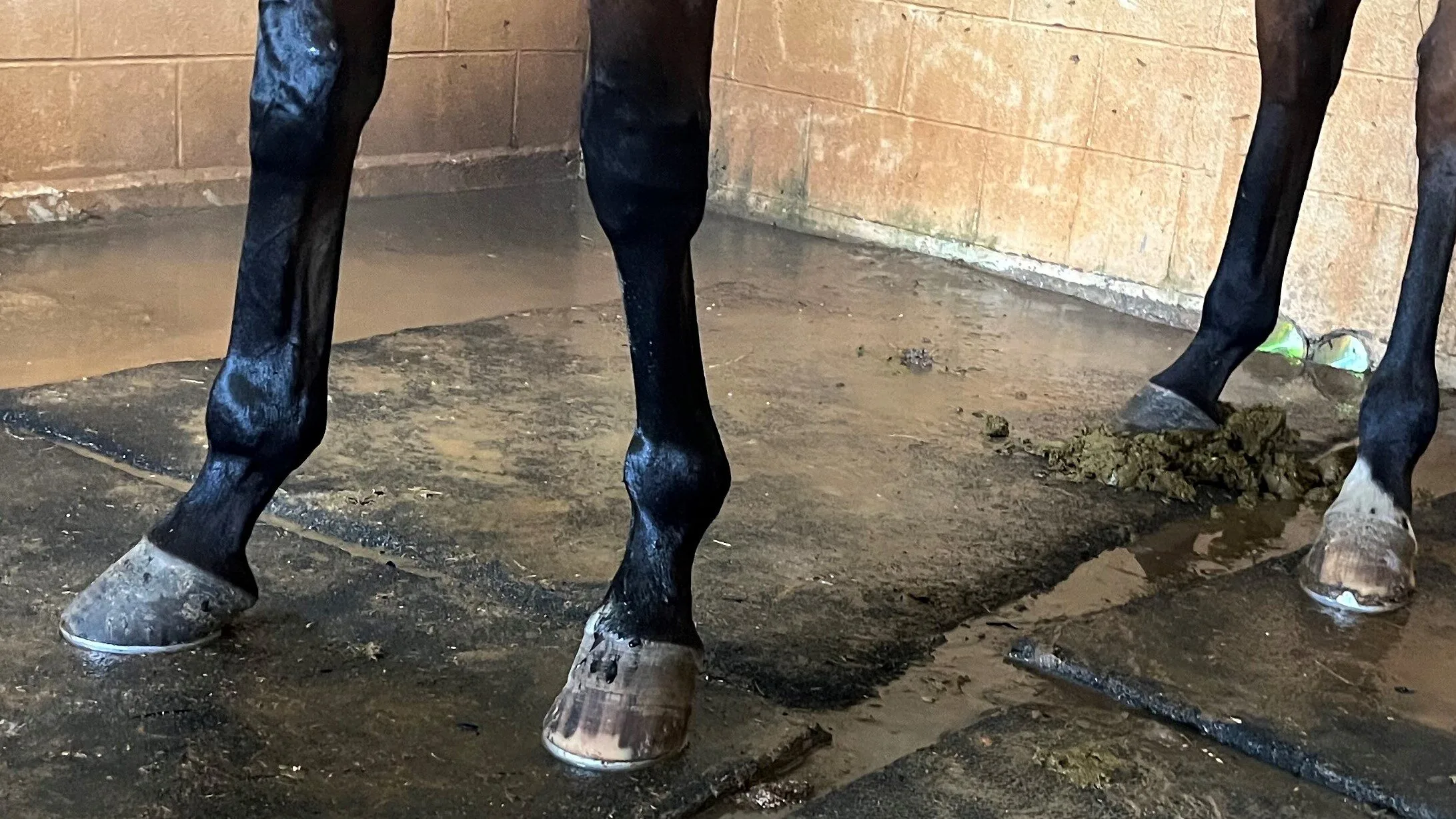
Do Horses Like Being Shod?
Putting shoes on and taking them off doesn’t typically hurt horses unless the farrier sinks the nail into the wrong spot. Correctly attached shoes are nailed through the hoof wall, which does not have nerves.
The horses seem excited when the farrier arrives. And, I’m not sure if it’s because they enjoy attention from him or their new shoes. But most of them do like having their hooves picked and don’t mind shoeing at all – so long as an expert does it!
Nevertheless, most horses are relatively “neutral” when it comes time for them to be shod. They might not like the process, but they don’t hate it either.
Horses will feel the force of each hammer blow as nails are driven into their hooves, but they won’t experience any discomfort from that sensation going in and out of their hoof wall.
Naturally, it is crucial to select a good farrier for the job. And unless you’ve been trained, I wouldn’t advise attempting to shoe your own horses; it’s easy to end up hurting your horse by driving nails into the wrong area.
What Happens if You Don’t Put Shoes on Your Horse?
Every once in a while, you might come across a working horse without shoes. Some horses with naturally tough feet can endure riding without shoes. We often take the shoes off our horses when we turn them out in the pasture and lay them up.
Another reason to take their shoes off is if the horse has a problem wearing shoes- its hooves might be too brittle to nail a shoe on. You may be able to ride a horse without shoes, but you’ll have trouble on paved surfaces. Without the proper footwear, your animal’s hoofs will wear out, and they will eventually become lame.
Your working horses may need protection to prevent their hooves from wearing down caused by running on trails with mixed terrain of pavement and packed dirt – so make sure that there’s always some type of protective gear in place.
Hoof boots are a great alternative to shoes since they have excellent grip and solid protection and the ability to remove them when they are not needed.
Why Don’t Wild Horses Need Shoes?
Wild horses with weak feet couldn’t survive, so through the years, they evolved to have strong, durable hooves. They also wear down their hooves while walking, which means that wild horses don’t need their feet trimmed or shoes.
Moreover, domesticated horses rely on their human masters to take care of them, and wild horses don’t need the superior gripping that farm horses require when pulling plows.
And an important part of horse care is looking after the hooves and ensuring their health and safety for years to come. Horseshoes can help with that.
Conclusion: Answering the Pain Question
As we’ve traversed the complex landscape of horseshoeing, we’ve encountered diverse opinions, historical practices, modern alternatives, and scientific insights. Let’s summarize what we’ve discovered:
- In Favor of Horseshoeing: We’ve seen how horseshoes can offer protection, support, and therapeutic benefits for many horses. Expert opinions and scientific studies often support this practice when done correctly.
- Against Horseshoeing: We’ve also explored claims that horseshoeing might cause pain or harm. While these arguments have some backing, especially if horseshoeing is improperly done, they often stem from philosophical stances or isolated incidents.
- Alternative Approaches: Modern alternatives like barefoot trimming and hoof boots provide viable options, emphasizing the need for individualized consideration.
It’s clear that the question, “Do horseshoes hurt horses?” does not have a simple yes or no answer. Horseshoeing can be either beneficial or detrimental, depending on various factors including the horse’s individual needs, the skill of the farrier, the chosen method, and ongoing care and observation.
For horse owners and caretakers, the path forward should include:
- Consultation with Professionals: Engaging with skilled farriers, veterinarians, or hoof care specialists to understand what’s best for each particular horse.
- Education and Awareness: Understanding the different options and approaches to make informed decisions.
- Ongoing Monitoring: Regularly evaluating the horse’s comfort, performance, and hoof health, and being willing to make changes if needed.
In terms of further areas of study, continued research into the long-term effects of various horseshoeing methods, as well as comparisons between traditional and alternative approaches, would add valuable insights to this age-old practice.
In closing, the question of pain in horseshoeing is multifaceted and requires a nuanced, thoughtful approach. What’s paramount is the horse’s well-being, and with careful consideration, knowledge, and professional guidance, horseshoeing can indeed be a practice that supports and enhances the horse’s life rather than causing harm. The answer lies in the application, the intent, and the individual horse’s unique world.
Below is a YouTube video showing the benefits of hoof care.
FAQs
How long should horseshoes be kept on?
Replace the horseshoes once the heel extends past the shoe or if your horse’s hooves become brittle, injured, or crooked. Replace damaged or twisted shoes right away as they can do more harm than good.
How much do horseshoes cost?
The National average price of trimming plus shoeing four hooves is about $120. Trimming only can cost between $30 and $50.
Is it illegal to shoe your own horse?
Horseshoeing is not an easy process; it needs skills. A farrier undergoes four years of training to achieve this qualification. Hence, shoeing a horse should only be done by vets or farriers.
Meet Miles Henry
An avid equestrian and seasoned racehorse owner, Miles Henry brings his extensive experience to the equine world, proudly associating with the AQHA, The Jockey Club, and various other equine organizations. Beyond the racetrack, Miles is an accomplished author, having published various books about horses, and is a recognized authority in the field, with his work cited in multiple publications.
🔗 Connect with Miles:
Twitter
Facebook
YouTube: Check out race highlights, horse care tips, and more!

